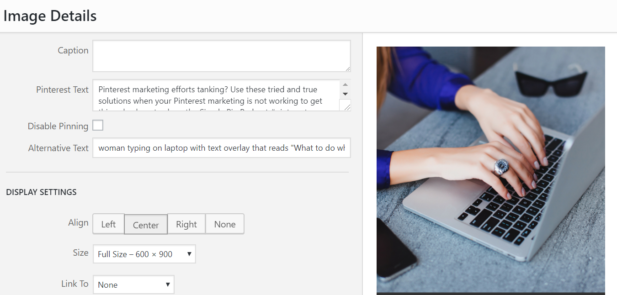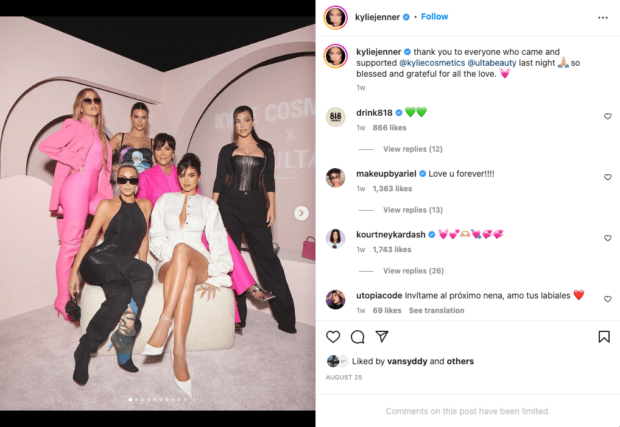Consistency is a word that’s thrown around a lot these days, and it seems to be getting a bad rep. We’re constantly told that we need to show up consistently, create content consistently, sell consistently… But does it really mean what you think?
In this episode, we’re uncovering the truth about consistency and what it truly means to be consistent.
The biggest misconception about what it means to be consistent.
Consistency is a word that gets thrown around a lot in the online space and it seems to be getting a bit of a bad reputation. We hear people say that you need to show up consistently, post consistently, sell consistently, BE consistent… and I think that all of these things are true. You DO need to be consistent if you want to see progress and get great results.
However, there are a few common misconceptions that come up when we hear these things. A lot of people associate consistency with showing up and giving it 100% every single day, and that’s not what consistency is AT ALL.
Being consistent does NOT mean, that you have to do the same thing every day, that you have to hold yourself to some rigid system or structure for the sake of “consistency”, that you have to do things perfectly, or that you have to do something you don’t enjoy for the sake of your business’ growth.
None of these things is what it means to be consistent, yet this is what so many people think when they hear that word. I want to rewrite that belief.
What it really means to be consistent.
A lot of people interpret consistency as having to show up and go full force every day, but that is not the true meaning of consistency. That is what leads to burnout.
When I say that you need to be consistent, what I really mean is that you need to figure out what you need to do each day to move the needle forward. Even if it’s just something that will get you 1% closer to your goal. That’s consistency.
Some days you might have the energy to do more, and so you can make that choice if it feels good to you! Some days, you might not have the energy to do anything at all, and missing a day here and there is absolutely okay. Nothing catastrophic is going to happen. But the point is, the consistency you’ve built over the days, weeks, months before is going to carry that through and make it okay for you to miss a day or two!
And like I said, consistency isn’t about perfection. Showing up in the first place is so much more important than showing up perfectly. So have a think about the goals you have for your business and ask, “what can I do to move myself 1% closer to that goal?”
For example, if your goal for this month is to sign a new client, maybe the one thing you do today is write an email to your list, or maybe you craft a valuable Instagram caption, or show up on your Stories to talk about your offer. These are all small things that you can do that add up over the long run. It’s all part of a bigger strategy and what it means to be consistent.
And it’s okay if on the days where you’re just not feeling high-energy and you don’t feel like doing anything, it’s okay for you to just do one small thing. Because there will also be days where you feel unstoppable and you do 10 things that will move you closer to that goal. At the end of the day, consistency is all about balance.
How I’m able to stay consistent in my business
In my own business, I pride myself in being very consistent with my content. But that doesn’t mean that I’m creating and publishing content every single day. That would be far too much for me to handle, and far too much for my audience to consume as well! We often talk about the importance of being consistent with our content, but you can be consistent in a way that works for you.
For me, I consistently…
Release a podcast episode every single week
Write a blog post every week
Create 2-3 Instagram posts each week
Write 2 emails each week
Post to my Instagram Stories every day
Publish a Pinterest pin every day
And I do all of these things because I know that it’s going to move the needle forward. I know that it’s going to help me connect with my audience and that it’s going to help me sell my offers. That’s why I do these things consistently.
And yeah, there might be the odd day where I miss an Instagram Story, or a week where only one email goes out, and that’s okay. It’s okay to miss a day, you have to recognize when to give yourself some grace!
And I do just want to address the fact that I do create a lot of content. I haven’t always created this much content, but my business is almost 10 years old now and so over time, I’ve created a lot of systems and processes and hired team members to help me do this.
If you’re not at that stage right now, consistency might look like 2 Instagram posts and an email each week. The point is, you are being consistent in a way that works for you.
Steal this trick to be more consistent in your own business & commit to moving the needle forward each day
My favorite way to make sure that I am consistently showing up and moving the needle forward for my business is that each morning before I start on any client work or do any admin-related tasks, I always spend the first hour of my day working ON, not IN it.
I don’t do any client work for that first hour. It’s solely dedicated to doing something that is going to move the needle forward. That might be working on a sales page or recording a podcast episode, or creating social media content. Whatever it is, it’s 100% going to move me closer to my goal.
And then I also like to dedicate at least one complete day of the week to this as well. This is a day where I won’t take any calls, I won’t do any client work , and the entire day is just dedicated to moving my business forward.
If you aren’t already crafting out dedicated time to work ON your business and move the needle forward, I really recommend that you try this out. You don’t have to dedicate a full day to it, but if you can spend the first hour of each day just doing something that’s going to move you forward then you are going to see BIG results.
If there’s one thing that you take away from todays episode, let it be that you commit to taking messy, imperfect action and start showing up in a way that feels good to you.
Being consistent does NOT mean that you have to be perfect. In fact, it has less to do with the specific action we take and much more to do with the attitude we have towards doing the things that are necessary to our growth and how we act when things get tough.
















